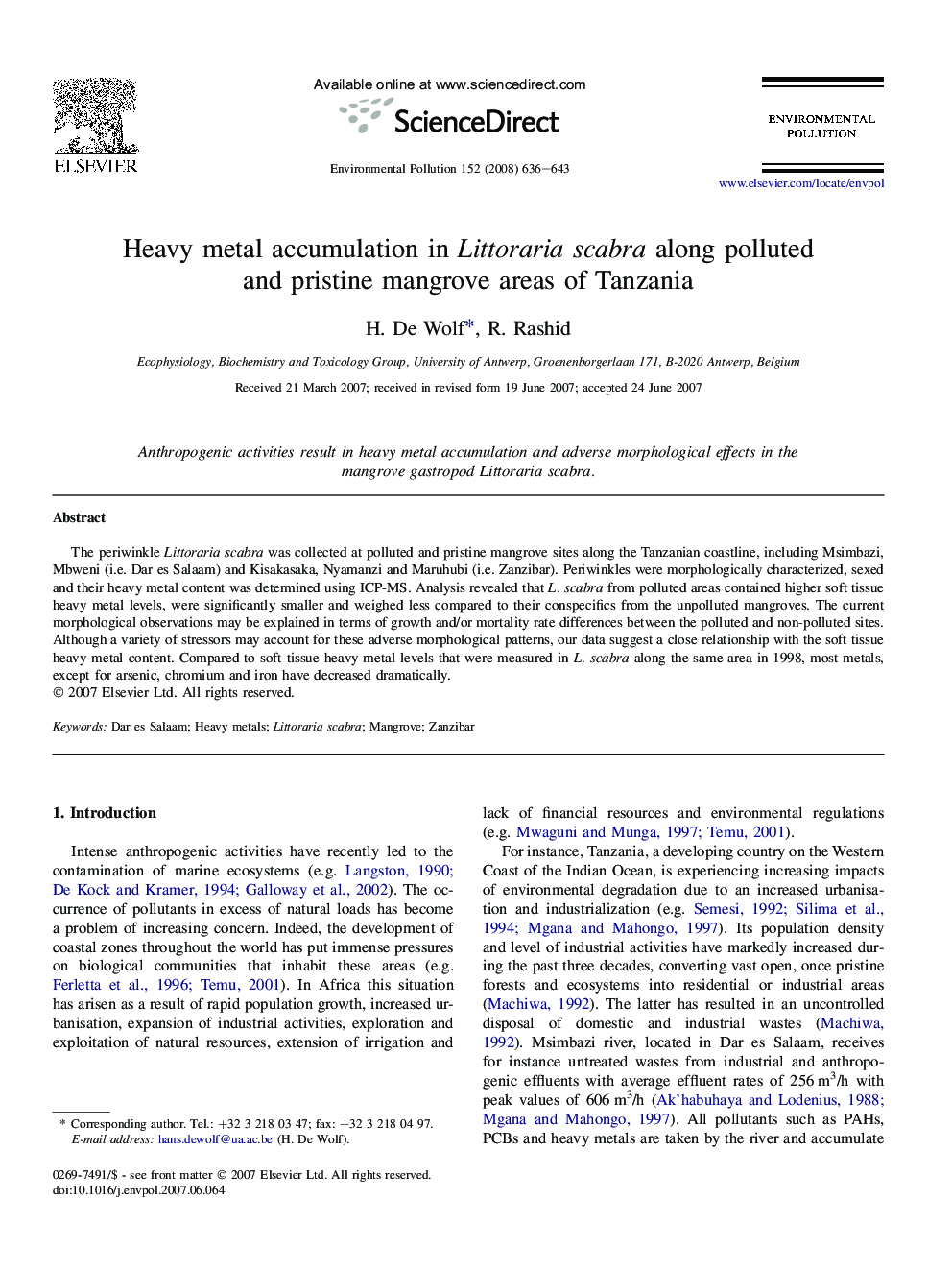| Article ID | Journal | Published Year | Pages | File Type |
|---|---|---|---|---|
| 4426853 | Environmental Pollution | 2008 | 8 Pages |
The periwinkle Littoraria scabra was collected at polluted and pristine mangrove sites along the Tanzanian coastline, including Msimbazi, Mbweni (i.e. Dar es Salaam) and Kisakasaka, Nyamanzi and Maruhubi (i.e. Zanzibar). Periwinkles were morphologically characterized, sexed and their heavy metal content was determined using ICP-MS. Analysis revealed that L. scabra from polluted areas contained higher soft tissue heavy metal levels, were significantly smaller and weighed less compared to their conspecifics from the unpolluted mangroves. The current morphological observations may be explained in terms of growth and/or mortality rate differences between the polluted and non-polluted sites. Although a variety of stressors may account for these adverse morphological patterns, our data suggest a close relationship with the soft tissue heavy metal content. Compared to soft tissue heavy metal levels that were measured in L. scabra along the same area in 1998, most metals, except for arsenic, chromium and iron have decreased dramatically.
